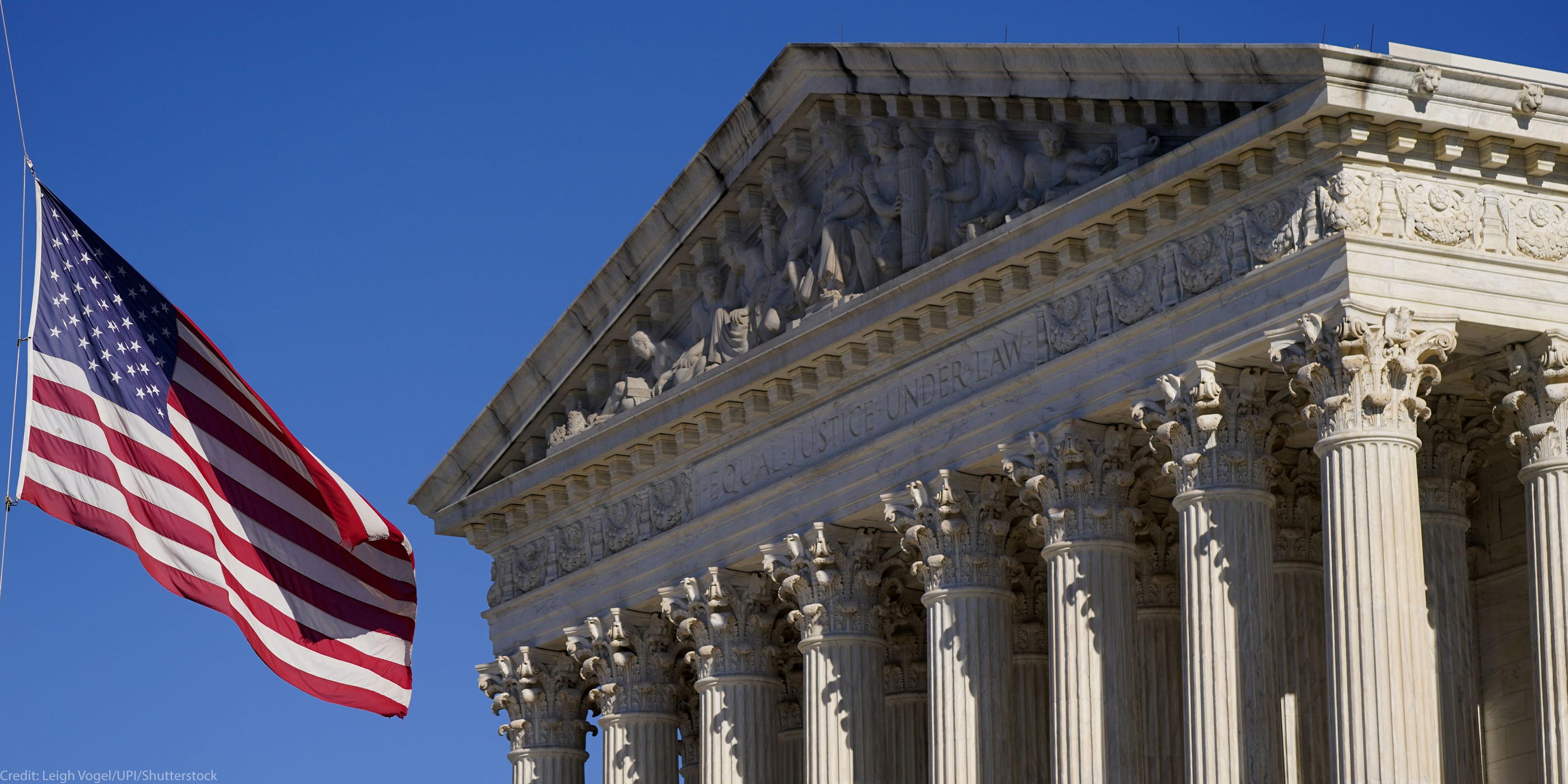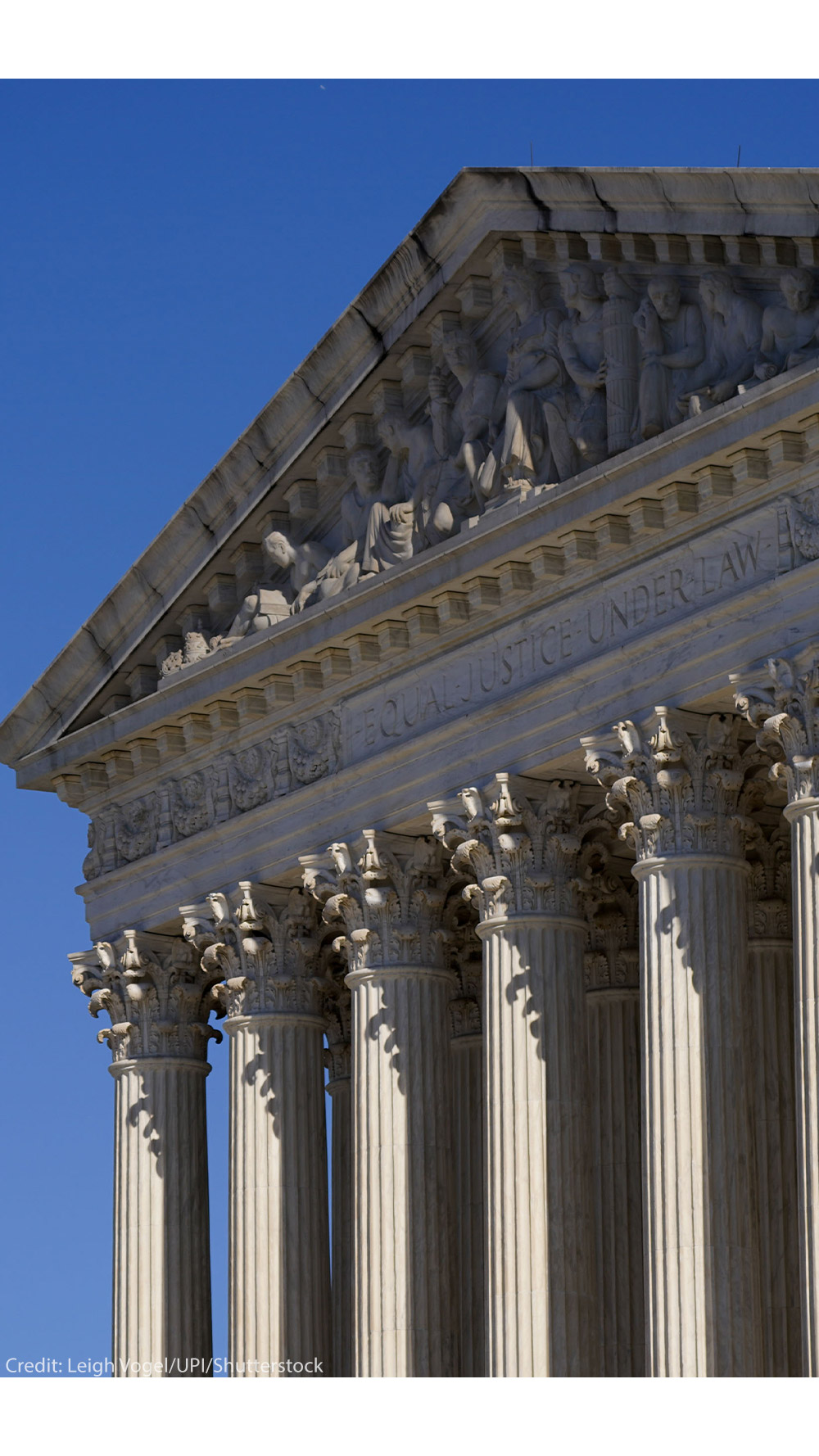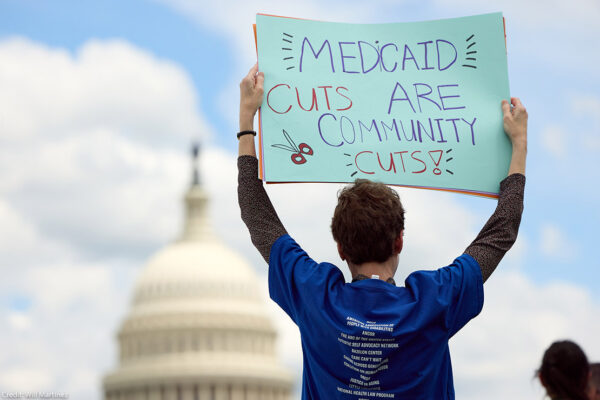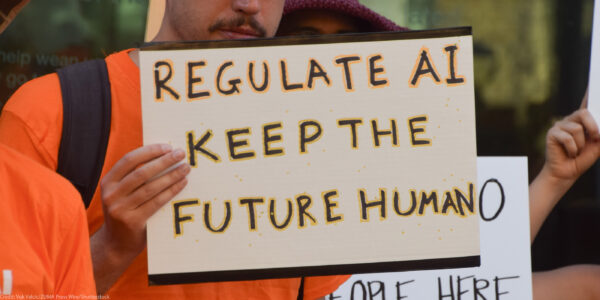Takeaways from the Supreme Court's Term


On the last day of the term, the Supreme Court took hard right turns in two major First Amendment cases, lashed out at so-called “universal injunctions” in cases challenging President Donald Trump’s attempt to end birthright citizenship, and punted on a major congressional redistricting case. Over the broader course of the term, the conservative 6-3 majority made a show of force—to the detriment of LGBT Americans’ rights, free speech on the internet, and longstanding precedents on the First Amendment’s Free Exercise Clause. But the court also sided with civil-rights plaintiffs and criminal defendants in consequential lower-profile cases.
In its emergency docket, the court fulfilled its core constitutional role as a check on the president‚Äôs abuses at critical moments during the term. In two Õ¯∫ϱ¨¡œ cases challenging the invocation of an 18th-century wartime statute to deport people without due process, the court unanimously rejected President Trump‚Äôs extremist arguments that his actions are unreviewable by the courts, and a majority blocked the deportations pending further litigation. In many other cases, however, the court overrode lower courts to let Trump administration policies proceed.
The Õ¯∫ϱ¨¡œ brought three cases before the court this term. We lost two, and the court set the third‚ÄîLouisiana v. Callais, which considers the constitutionality of Louisiana‚Äôs congressional redistricting map‚Äîfor re-argument next term. The Õ¯∫ϱ¨¡œ also filed friend-of-the-court briefs in 11 cases and was on the winning side in six of those cases.
Losses in Major Cases on LGBTQ Rights, Free Speech on the Internet, and Religion
In perhaps the biggest case of the term, Skrmetti v. United States, Chief Justice John Roberts, writing for a 6-3 majority, a Tennessee law, SB 1, that bans gender-affirming health care for transgender adolescents. Both the U.S. Justice Department and the Õ¯∫ϱ¨¡œ challenged SB 1 on the grounds that it discriminates on the basis of sex and violates the 14th Amendment‚Äôs Equal Protection Clause. The court upheld SB 1, refusing to apply the constitutional standard that has long applied in sex discrimination cases.
The court‚Äôs decision in Skrmetti has devastating consequences for our clients‚Äîthree Tennessee families with trans teens whose essential medical care has been stripped away by their state legislature‚Äîand countless other families in Tennessee and 25 other states that have enacted similar health care bans. The Õ¯∫ϱ¨¡œ has challenged 11 of those laws. As Justice Sonia Sotomayor wrote in a powerful dissent, the majority‚Äôs analysis ‚Äúinvites legislatures to engage in discrimination by hiding blatant sex classifications in plain sight. It also authorizes, without second thought, untold harm to transgender children and the parents and families who love them.‚Äù
One silver lining in the Skrmetti decision, however, is that the court did not reach the question of whether laws discriminating against transgender people are subject to less scrutiny from courts than other forms of sex discrimination. Chief Justice Roberts avoided that question on the rationale that SB 1 categorizes based on age and medical use, and not sex or transgender status. This means challenges to other state and federal laws that discriminate against transgender
Americans will continue, including the Õ¯∫ϱ¨¡œ‚Äôs lawsuits against President Trump‚Äôs anti-trans executive orders.

Õ¯∫ϱ¨¡œ attorney Chase Strangio speaks to the media outside the U.S. Supreme Court after arguing against the ban gender-affirming health care for transgender children in Skrmetti v. the United States.
WILL OLIVER/EPA-EFE/Shutterstock
The court slashed civil liberties again in Free Speech Coalition v. Paxton, a First Amendment case in which the Õ¯∫ϱ¨¡œ a Texas law that requires users to verify their age to access websites whose content is more than one-third sexually explicit and considered obscene for minors. The law deters adults from accessing vast amounts of First Amendment-protected content, including not just pornography but other materials state officials might deem obscene for minors, such as information on sexual health or LGBTQ issues. In the Texas law, the 6-3 majority opinion by Justice Clarence Thomas upended settled precedents in prior Õ¯∫ϱ¨¡œ cases‚ÄîAshcroft v. Õ¯∫ϱ¨¡œ and Reno v. Õ¯∫ϱ¨¡œ‚Äîin which the court held that laws that limit adults‚Äô access to First Amendment-protected, sexually explicit materials must meet the highest constitutional standard of strict scrutiny, even if the government‚Äôs stated purpose is to protect minors. The court‚Äôs decision paves the way for more state legislatures‚Äîand Congress‚Äîto enact laws that limit free speech online.
The court also partially abandoned longstanding precedents on the Free Exercise Clause of the First Amendment in Mahmoud v. Taylor, in which parents with religious objections sued for the right to opt their children out of parts of a public school district‚Äôs English Language Arts curriculum that was designed to foster an inclusive learning environment for all students and help them work across differences. The Õ¯∫ϱ¨¡œ‚Äôs friend-of-the-court argued that the school district‚Äôs no-opt-out policy‚Äîissued after an initial period of opt-outs led to rampant absenteeism and stigmatizing of students who are LGBTQ or have LGBTQ family members‚Äîdid not violate the Free Exercise Clause. In a 6-3 majority by Justice Samuel Alito, the court held for the first time that parents may pick and choose from a secular public-school curriculum based on their religious objections. This ruling will undoubtedly sow chaos, stigmatize marginalized students, and interfere with educators‚Äô ability to achieve their secular educational goals.
Quiet Wins for Civil Rights Plaintiffs and Criminal Defendants
While the court took a hard right turn in its marquee constitutional cases this term, it quietly issued common-sense rulings in favor of civil rights plaintiffs in lower-profile cases in which the Õ¯∫ϱ¨¡œ filed briefs.
In , the court rejected the government’s immunity defense and that a couple who were the victims of a violent wrong-house raid by the FBI could proceed with their claim for damages under the Federal Tort Claims Act. In another pair of cases, the court rejected defendants’ Kafkaesque arguments seeking to block civil-rights plaintiffs from pursuing justice in the courts. In , plaintiffs sued in state court under a federal civil rights statute, Section 1983, claiming that the state labor agency illegally delayed decisions on their unemployment claims. Putting plaintiffs in a Catch-22 situation, the state court rejected the claims on the grounds that the plaintiffs could not sue about their delayed unemployment claims until the agency decided the claims. Justice Brett Kavanaugh, writing for a 5-4 majority, that state courts cannot use this state-law rule to shield state officials from lawsuits.
In Perttu v. Richards, an incarcerated man sued a prison officer for sexually abusing him and then retaliating against him for attempting to file an administrative grievance about the abuse. Chief Justice Roberts, writing for a 5-4 majority, rejected the prison officer’s argument that the plaintiff’s claim should be dismissed for failure to file an administrative grievance first, as required by the Prison Litigation Reform Act. Instead, the court ruled that the plaintiff had the right to a jury trial because the facts concerning his access to the grievance process were intertwined with his retaliation claim.
In two other cases where the Õ¯∫ϱ¨¡œ filed briefs, the court ruled in favor of criminal defendants. In Glossip v. Oklahoma, the court Richard Glossip‚Äôs conviction and death sentence on the grounds that prosecutors hid evidence suggesting that another man had committed the crime and that prosecution witnesses testified falsely. Our argued that this prosecutorial misconduct violated due process and that such misconduct is a systemic problem in death penalty prosecutions in Oklahoma.
In , the court with criminal defendants in a case about how to interpret the First Step Act, a federal-sentencing reform law enacted during Trump‚Äôs first term. The court held that the First Step Act, which reformed grotesquely unfair federal mandatory minimum sentences, applies to individuals who are re-sentenced after their original sentences are vacated on appeal. This decision is enormously consequential. For example, Timothy Carpenter, the Õ¯∫ϱ¨¡œ‚Äôs client in a 2018 Supreme Court ruling that Fourth Amendment protections apply when the police obtain cell phone location records from cell phone service providers, would have the mandatory minimum portion of his sentence reduced from 105 to 25 years on resentencing under the First Step Act.
The Ascendancy of the Emergency Docket
In time, this term might be best remembered not for the court’s major merits cases, but for the eclipsing importance of its emergency docket—cases that reach the court through a request to temporarily block a lower court’s decision from going into effect, or order relief the lower court denied, while the litigation continues. Appellate courts generally issue these emergency orders when they find that the lower court’s decision is likely incorrect and the party asking for the order will be irreparably harmed if the lower court's decision remains in place. The emergency docket was particularly fraught this term because of the large number of cases challenging the Trump administration’s actions.
At least three themes emerge from these cases: First, the court is leaning into the emergency docket and brushing aside concerns that weighty issues should not be decided on rushed briefing and a limited record. For example, on the last day of the term, the court issued an order in Trump v. CASA, where the Trump administration asked the court to partially block three of the many lower court opinions that have unanimously ruled that the president’s effort to undo birthright citizenship violates the 14th Amendment. The government did not argue that Trump’s executive order was constitutional. Instead, it made the limited argument that the lower court rulings should apply only to the plaintiffs in the case—22 states, several membership organizations, and individuals. For everyone else, the government said, the executive order should still apply, denying U.S. citizenship to babies born in other states.
In CASA, the 6-3 majority disapproved of ‚Äúuniversal injunctions‚Äù‚Äîa term used to criticize court orders that broadly block the defendant from taking some illegal action without a finding that the scope of the order is necessary to protect the plaintiffs in the case. While some justices and commentators on the left and the right have long criticized such injunctions, the birthright citizenship case was an odd vehicle for the court‚Äôs ruling. Indeed, the majority opinion did not actually hold that President Trump‚Äôs executive order could go into effect and instead ordered at least an additional 30-day pause on the executive order and sent the cases back to the lower courts, leaving it to them to re-decide the scope of their injunctions. The CASA decision also leaves untouched other mechanisms for people harmed by the executive orders to win nationwide protection‚Äîand the Õ¯∫ϱ¨¡œ filed a new proposed nationwide class action lawsuit within two hours of the Supreme Court‚Äôs decision.
Notably, Justice Kavanaugh wrote a concurring opinion suggesting that the Supreme Court should jump into even more cases through its emergency docket, generally deciding on a nationwide basis whether challenged federal actions should continue, or be blocked, during the long course of litigation.
Second, over the course of the term, the Supreme Court issued critical emergency orders checking abuses of executive power, including in two of the Õ¯∫ϱ¨¡œ‚Äôs cases challenging President Trump‚Äôs invocation of the Alien Enemies Act of 1798 to rationalize the detention and deportation of Venezuelan nationals without due process. In Trump v. J.G.G., the court the Trump administration‚Äôs request to pause a lower court order that had blocked deportations under the Alien Enemies Act, agreeing that the case should have been filed in the districts where our clients were detained, not in Washington, D.C. Critically, however, the court unanimously rejected the government‚Äôs argument that the courts are powerless to review the president‚Äôs decision and held that due process requires giving people a fair chance to challenge their detention and deportation in court. After that order, the Õ¯∫ϱ¨¡œ brought 10 new cases in district courts around the country.
A little over a month later, the court granted the Õ¯∫ϱ¨¡œ‚Äôs emergency application in one of those follow-up cases, A.A.R.P. v. Trump. In an order issued at almost 1:00 A.M. ET, just hours after we filed our request, the court (by a 7-2 vote) issued a temporary order blocking the Trump administration from hastily deporting our clients under the Alien Enemies Act. It later issued an opinion extending that order pending further order of the court.
These two emergency orders prevented the plaintiffs from being sent to a notorious Salvadoran prison without due process, and demonstrated that the president is not above the law.
Third, later in the term, the Supreme Court sided more often with the Trump administration on its emergency applications, allowing the government to move forward with actions the lower courts had held unlawful. In an Õ¯∫ϱ¨¡œ case, Noem v. National TPS Alliance, the court permitted the Trump administration end temporary protected status (TPS) for Venezuelans. The court‚Äôs order (over Justice Jackson‚Äôs lone dissent) puts 350,000 people at risk of deportation and strips their work authorization.
The court also sided with the Trump administration in another immigration case (not involving the Õ¯∫ϱ¨¡œ), Department of Homeland Security v. D.V.D., a challenge to the Trump administration‚Äôs deportations of individuals to countries not designated in a deportation order, and without due process. Notably, in D.V.D., the Trump administration had deported individuals in defiance of a federal district court order. Thus, as Justice Sotomayor wrote a in D.V.D., the majority‚Äôs order ‚Äúreward[s] lawlessness,‚Äù and undermines the ‚Äúfoundational principle‚Äù that ‚Äúours is a government of laws, not of men.‚Äù
While the court stood firmly as a check against the executive branch at critical moments, its overall record was mixed and the term ended with several orders in favor of the president. saw the ‚Äúvery real possibility that at least some of the justices . . . are worried about how much capital they have to expend in confrontations with President Trump.‚Äù Time will tell, as undoubtedly the Trump administration will continue to push against constitutional limits next term, both on the emergency and merits dockets. The Õ¯∫ϱ¨¡œ will be there to fight for civil rights and civil liberties, and the American people will be watching.



